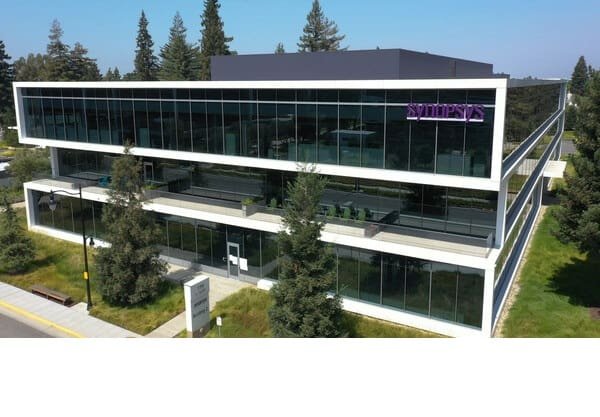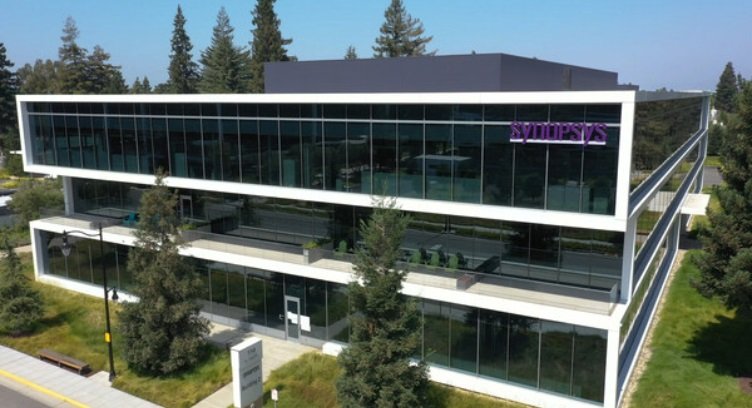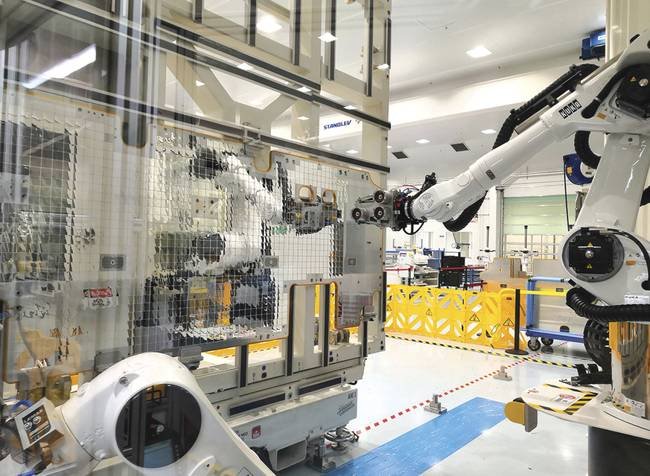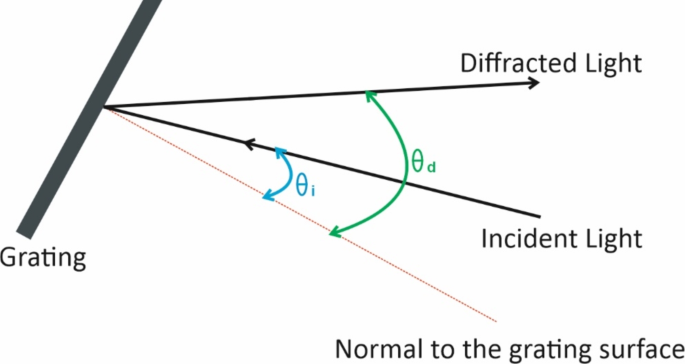Due to technical issues, access to a Business Wire news article is currently unavailable. The article, dated September 19, 2024, is expected to detail Keysight Technologies’ planned acquisition of Synopsys’ Optical Solutions Group. The news is anticipated to focus on how this acquisition advances Keysight’s strategy in software-centric solutions. Further details are pending resolution of the access issue.
Category: Blog
Your blog category
-
Here are a few options for the news article title, all under 13 words:
Option 1 (Focus on Speed):
AI Achieves 10,000x Faster Microscopy Breakthrough
Option 2 (Focus on Discovery):
Record Time: AI Uncovers 10,000x Faster Microscopy Methods
Option 3 (More Direct):
New Microscopy Techniques Discovered 10,000x Faster by AI
Option 4 (Emphasis on Revolution):
AI Revolutionizes Microscopy with 10,000x Speed Boost
Choose the option that best fits the tone and emphasis you want in your news headline. All options are concise and under the word limit.
Researchers have developed groundbreaking artificial intelligence techniques that are revolutionizing microscopy. These new AI methods can discover and optimize complex microscopy setups at speeds up to 10,000 times faster than traditional approaches. Scientists have harnessed AI to automate the intricate process of aligning and fine-tuning the optical components within microscopes. This automation dramatically accelerates the pace of scientific discovery in fields that heavily depend on advanced microscopy imaging, potentially leading to faster breakthroughs in medicine, materials science, and various other research areas. The AI’s ability to rapidly explore and refine microscopy techniques promises to significantly enhance the efficiency and capabilities of scientific research relying on visual observation at microscopic levels.
-

Vuzix: Full-Color Waveguide Smart Glasses Debut at CES 2025
Rochester, N.Y. – Vuzix Corporation, a smart glasses and augmented reality technology company, will display its latest waveguide technology and smart glasses designs at CES 2025 in Las Vegas from January 7-10.
The showcase will feature Vuzix’s new full-color 1.0mm and super-slim 0.7mm thin waveguides. These will be demonstrated with various display engines, including microLEDs and the latest full color ultra-small LCoS projectors.
In addition, Vuzix will present new OEM Ultralite smart glasses reference platforms, including a full-color binocular model equipped with microphones, speakers, and a built-in camera. Visitors will have the opportunity to experience Vuzix’s existing product range as well.
Paul Travers, President and CEO of Vuzix, stated that with the rise of AI and support from major tech companies, the adoption of smart glasses is beginning. He believes Vuzix’s waveguide and product designs are central to this trend and anticipates 2025 as a significant turning point for the industry. Vuzix focuses on developing high-volume, cost-effective waveguides and supporting technologies.
Vuzix Corporation designs, manufactures, and markets AI-driven smart glasses and AR technologies for enterprise, medical, defense, and consumer sectors. Their offerings include wearable computing devices, OEM waveguide optics, and display engines. The company holds over 400 patents and has received multiple CES Innovation Awards. Founded in 1997, Vuzix is publicly traded on NASDAQ (VUZI) and has offices in Rochester, NY, and Kyoto and Okayama, Japan.
-

Keysight Technologies to Acquire Synopsys’ Optical Solutions Business
Synopsys has announced the sale of its Optical Solutions Group (OSG) to Keysight Technologies in a definitive agreement. This move is aimed at securing regulatory approval for Synopsys’ pending acquisition of Ansys, a deal expected to close in the first half of 2025 and currently awaiting regulatory clearances.
Ravi Subramanian, General Manager of the Systems Design Group at Synopsys, expressed pride in the OSG team and their development of leading optical design tools. He stated that Keysight is an “excellent future steward” and emphasized the benefit of continued competition in optical design solutions for customers worldwide.
OSG offers design tools and services for optical product simulations and visualizations, with products like CODE V for imaging systems, LightTools illumination design software, LucidShape for automotive lighting, RSoft Photonic Device Tools, and the newly launched ImSym virtual prototyping platform. These tools and the expert team are intended to help customers accelerate the delivery of superior optics to market.
Keysight’s Vice President and General Manager for Design Engineering Software, Niels Faché, highlighted the expansion of Keysight’s software simulation portfolio with this acquisition. He mentioned that it would enable capabilities beyond electronics, extending to optics and photonics. Faché also expressed enthusiasm about welcoming OSG employees to Keysight and addressing customer design challenges requiring multi-physics simulations.
The financial terms of the agreement were not disclosed, and Synopsys indicated the transaction is not significant to its financials. The sale is subject to standard closing conditions and regulatory reviews. Until the deal closes, OSG will continue to operate as part of Synopsys, focusing on its existing business, customer service, and innovation.
Synopsys, Inc., based in Sunnyvale, California, provides silicon to systems design solutions, including electronic design automation, silicon IP, and system verification and validation, serving a wide range of industries.
-

Vuzix Debuts AI Smart Glasses with 2-Day Battery at CES 2025
ROCHESTER, N.Y. – Vuzix Corporation, a smart glasses and augmented reality technology company, is presenting its latest innovations at the Consumer Electronics Show (CES) 2025 in Las Vegas from January 7-10. The company is showcasing new hardware solutions, including Ultralite reference designs and waveguide technologies, at booth #19340 in the Central Hall of the Las Vegas Convention Center.
Vuzix is unveiling two new AI-powered smart glasses reference designs, the Ultralite Pro OEM Platform and Ultralite Audio OEM Platform, developed in collaboration with Quanta Computer. These platforms are designed for ODM and OEM customers in the consumer technology market.
The Ultralite Pro OEM Platform, powered by the Snapdragon AR1 Gen 1 platform, features dual full-color Avegant LCoS projectors and slim binocular waveguide optics for a 3D augmented reality experience. It is equipped with voice-activated commands, an onboard camera, and a microphone array for intuitive control and real-time image and video capture, aimed at hands-free productivity and entertainment applications.
The Ultralite Audio OEM Platform, building upon the Ultralite Z100, integrates dual speakers and a noise-canceling microphone for enhanced audio and voice interaction. It offers AI-driven features like voice assistants and real-time language translation and uses a monochrome microLED projector with a battery life of up to two days.
In addition to the smart glasses platforms, Vuzix is showcasing its advanced waveguide technology, including a 1.0mm-thin full-color waveguide and custom designs. These waveguides support AI applications with monocular and binocular configurations, fields of view from 30 to 40 degrees, and Vuzix’s Incognito technology for discreet AR displays. The company is also presenting various display engines, including microLEDs and LCoS projectors.
Paul Travers, President and CEO of Vuzix, stated that the company’s products and technologies are attracting partnerships with global leaders like Quanta Computer. He emphasized Vuzix’s position to provide innovative solutions for the growing AI-driven smart glasses market as it transforms consumer and enterprise sectors.
-

Keysight Technologies to Acquire Synopsys’ Optical Solutions Group
Synopsys has announced the sale of its Optical Solutions Group (OSG) to Keysight Technologies. OSG provides design tools and services for modeling light propagation for optical product simulations and visualizations, offering products such as CODE V, LightTools, LucidShape, RSoft Photonic Device Tools, and ImSym. The sale is a necessary step to gain regulatory approval for Synopsys’ pending acquisition of Ansys, expected to close in the first half of 2025. Keysight Technologies, a provider of design, emulation, and test solutions, stated that the acquisition of OSG will expand its software simulation capabilities into optics and photonics, beyond its traditional electronics focus. Keysight is looking forward to welcoming OSG employees and addressing customer challenges in multi-physics simulations. The transaction is subject to customary closing conditions and regulatory reviews. Synopsys has stated this sale is not financially significant and the terms of the agreement are not being disclosed. Until the deal closes, OSG will continue to operate as part of Synopsys, focusing on customer service and innovation, to ensure a smooth transition for its team, customers, and partners.
-
Freeform Optics Enable Analytic Design Breakthrough for Zoom Beam Expander
Researchers have published a paper detailing a new analytic design for a zoom XY-beam expander utilizing freeform optical surfaces. This innovative approach allows for precise control and manipulation of laser beams, expanding their diameter in both the X and Y directions independently while maintaining beam quality. The use of freeform optics offers greater design flexibility compared to traditional spherical lenses, enabling more compact and efficient beam expander designs. This research could have significant implications for various applications that rely on laser technology, such as advanced manufacturing, high-resolution imaging, and laser-based scientific instruments, where precise beam shaping and zooming are critical. The analytic design method outlined in the paper potentially offers a more streamlined and efficient approach to developing such advanced optical systems.
-

Machine Vision Boosts Satellite Manufacturing This Autumn
Traditionally, fitting optical solar reflectors (OSRs) to satellite panels, a crucial step for thermal control in high-radiation environments, was a manual and labor-intensive process. Workers meticulously positioned strips of OSRs, ensuring precise alignment. To enhance efficiency, automation company AKEOPLUS, collaborating with space manufacturer Thales Alenia Space, engineered an automated robotic solution. This system, named “SOLAR,” operates within a cleanroom environment and utilizes machine vision to accurately place OSRs on satellite panels.
The SOLAR robotic cell, developed by AKEOPLUS, incorporates MVTec’s HALCON machine vision software to achieve the required precision in OSR placement. Each panel, measuring 6 × 3 meters, is processed within a 7 × 5 meter working area. Robots within the cell are tasked with applying up to 7,000 small OSRs, each 40 × 43 mm, to the panels with an accuracy of less than 0.2 mm. While acknowledging limitations in the robots’ inherent movement precision, AKEOPLUS and Thales Alenia Space innovatively overcame this through the integration of advanced technology.
Each SOLAR cell comprises two robots, a positioning table for the satellite panels, a laser tracker for precise guidance of a six-axis robotic arm, and three high-resolution 2D cameras for industrial image processing. HALCON software plays a critical role managing quality inspection of OSRs, fine-tuning positioning, facilitating human-machine interaction, and providing visualization. The combination of machine vision and laser tracking establishes a precise dimensional control loop, enabling visual servoing between the robot and target position, according to Maxime Motisi, CFO and project manager of the SOLAR robotic cell at AKEOPLUS.
The manufacturing process begins with a smaller robot placing an OSR onto a vacuum backlight under the first camera. HALCON software analyzes the image captured by the camera to check for defects like breaks or scratches. Shape-based matching techniques are then used to pinpoint the OSR’s precise location and verify its dimensions against the intended model. HALCON ensures alignment accuracy within approximately 0.2 mm before glue is applied. The OSR is then transferred to a station where a larger robot takes over, transporting it to another processing station. Here, HALCON analyzes the glue pattern to confirm even distribution according to a predefined pattern.
For the final alignment, the OSR is positioned at a third camera station where HALCON algorithms determine the 3D transformation between the OSR’s corner coordinates and the robot gripper’s coordinate system. By identifying the corners of the OSR, HALCON defines a coordinate system, using a corner as the center point aligned with the edges. This coordinate system is crucial for accurate 3D alignment, compensating for potential tilts of the reflector held by the gripper. The OSR corner also serves as a reference point for precise placement on the satellite panel. The laser tracker and HALCON working in conjunction enable the robot to mount the OSR to the exact location on the large 18-square-meter panel with the required accuracy, correcting for any inaccuracies.
AKEOPLUS conducted lighting studies in 2017 to optimize the system’s vision capabilities. Backlighting is used for initial defect inspection and dimension checks. Low-angle lighting is employed at other camera stations to clearly identify the OSR corners against a light background for relocation purposes. Blue light, combined with low-angle illumination, is utilized during glue inspection to enhance contrast and identify white glue on the reflector’s mirrored surface.
The SOLAR cell system, integrating HALCON software, has achieved an overall equipment effectiveness exceeding 95%, according to AKEOPLUS. This significantly improves upon the previous manual process, where completing one large panel took two employees approximately seven days. In comparison, the automated system enables a single employee to complete a similar panel in five days. AKEOPLUS highlights features like 3D positional determination and subpixel-accurate shape-based matching as key factors contributing to the system’s ease of use and efficient integration. Motisi stated that HALCON is employed in almost every innovative machine AKEOPLUS develops, with roughly 75% of its HALCON usage dedicated to relocating 6D robots in 2D or 3D, 15% in inspection applications, and 10% in bin picking and collision avoidance.
-

Here are a few options for news article titles based on your original title, all under 13 words:
- Single Detector Powers Innovative Dual-Laser Raman Spectrometer (9 words)
- New Dual-Laser Raman Spectrometer Uses One CCD Detector (9 words)
- Dual-Laser Spectrometer Achieves Detection with Single CCD (9 words)
- Compact Dual-Laser Raman Spectrometer Built with Single Detector (11 words)
- Researchers Design Dual-Laser Raman Spectrometer Using Single CCD (11 words)
Choose the one that best emphasizes the aspect you want to highlight!
Scientists have successfully built and tested a new operational prototype of a spectrometer. The device, measuring 180 mm in length, 180 mm in width, and 122 mm in height, has demonstrated precise spectral measurements.
Researchers tested the spectrometer using standard mercury-argon and neon lamps to assess its performance. They connected optical fibers to these light sources and the spectrometer’s input slit to record emission spectra.
Analysis of the recorded spectra, including those of standard lamps and the Raman spectrum of cyclohexane, showcases the spectrometer’s capability. The data revealed distinct and well-separated spectral lines for mercury and neon, even closely positioned ones. For instance, using a 532 nm setup, the spectrometer clearly differentiated mercury lines at 576.96 nm and 579.066 nm, and neon lines at 614.306 nm and 616.359 nm. Similarly, a 784.65 nm setup successfully resolved closely located neon and argon lines at 841.843 nm, 840.82 nm, and 842.47 nm.
The experimental results indicated an average spectral resolution of 0.17 nm with the 532 nm configuration and 0.44 nm with the 784.65 nm configuration. Data analysis confirmed that tilting the optical plane by 10 degrees had a minimal impact on the spectral resolution.
Furthermore, the spectrometer demonstrated a high signal-to-noise ratio in Raman spectroscopy. When using a 532 nm laser, the signal-to-noise ratio was measured at 7145, while a 784.65 nm laser yielded a ratio of 40.
The researchers suggest that this new spectrometer design holds potential for use in advanced spectroscopic techniques like Fluorescence Correlation Spectroscopy (FCS) and Raman Correlation Spectroscopy (RCS). Its design also allows for the simultaneous recording of up to four Raman spectra using a two-dimensional detector, opening up new possibilities for complex sample analysis.
-

Cisco Supercharges Optical Network Software Capabilities
Cisco has announced enhancements to its Routed Optical Networking portfolio, including a new Site Manager for NCS 1010 networks. This Site Manager provides a single communication point for controllers like the Cisco Optical Network Controller, simplifying management and assurance tasks for site nodes, such as alarm monitoring and performance statistic viewing.
The updated portfolio also incorporates new devices like QDD-based Pluggable Optical Line System routers and now supports 100G-ZR and 400G-ZR coherent transceivers.
According to Bill Gartner, Senior Vice President and General Manager of Cisco’s optical systems and optics group, over 200 customers have already deployed Cisco Routed Optical Networking for 400G metro and data center interconnect applications. These deployments have resulted in benefits such as increased capacity, reduced energy consumption, and decreased network costs, complexity, and footprint.
The demand for optical connectivity technologies is rising due to the increasing prevalence of AI workloads and distributed cloud applications that require high-bandwidth performance. Cisco emphasizes that its optical components are designed for interoperability, allowing them to be used with other vendors’ equipment. This feature is highlighted as crucial for customers building out AI and distributed applications by linking diverse data sources.
Cisco’s optical offerings include its Nexus 9000 series and other components leveraging technology from its acquisition of optical maker Acacia Communications.